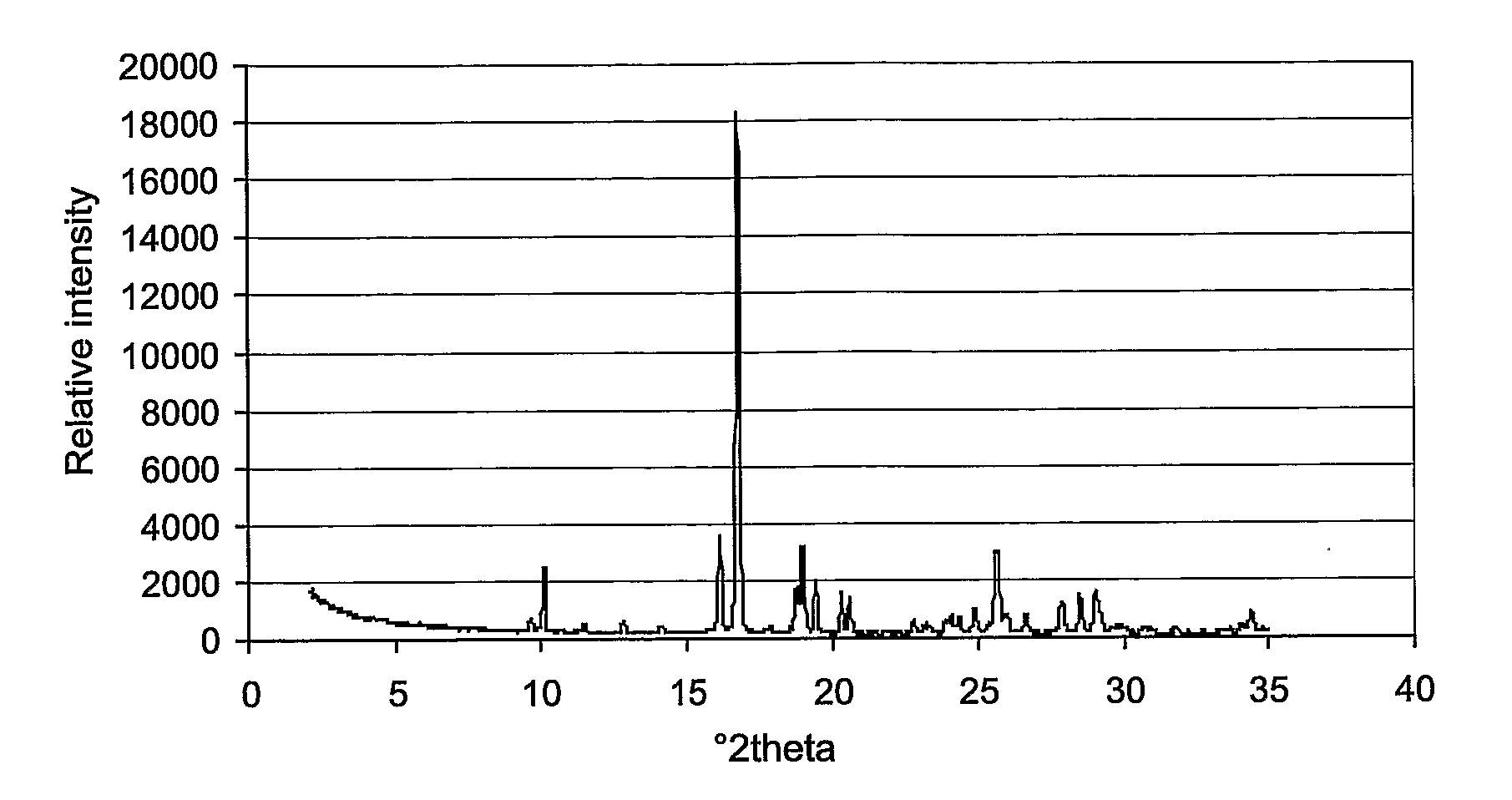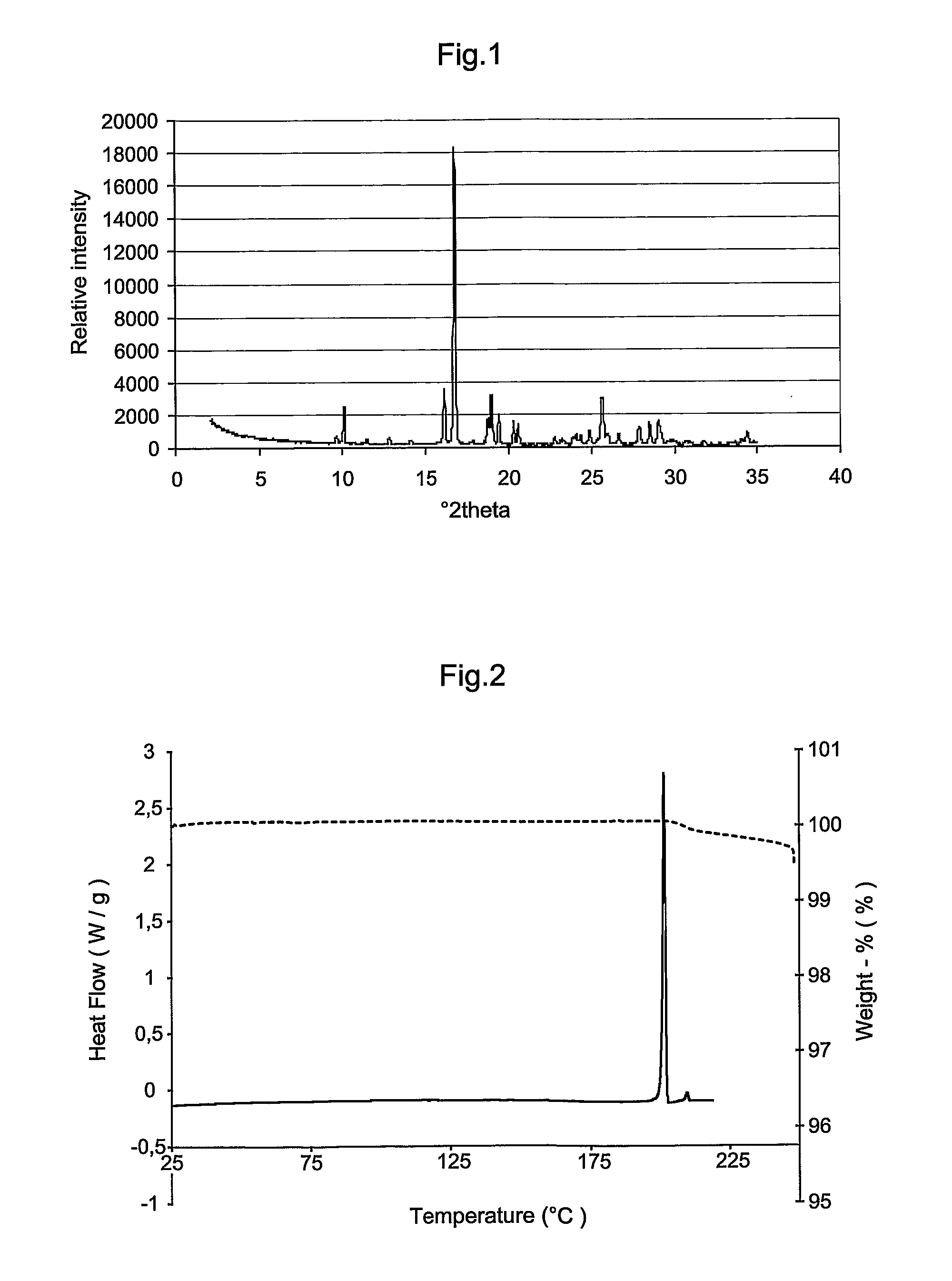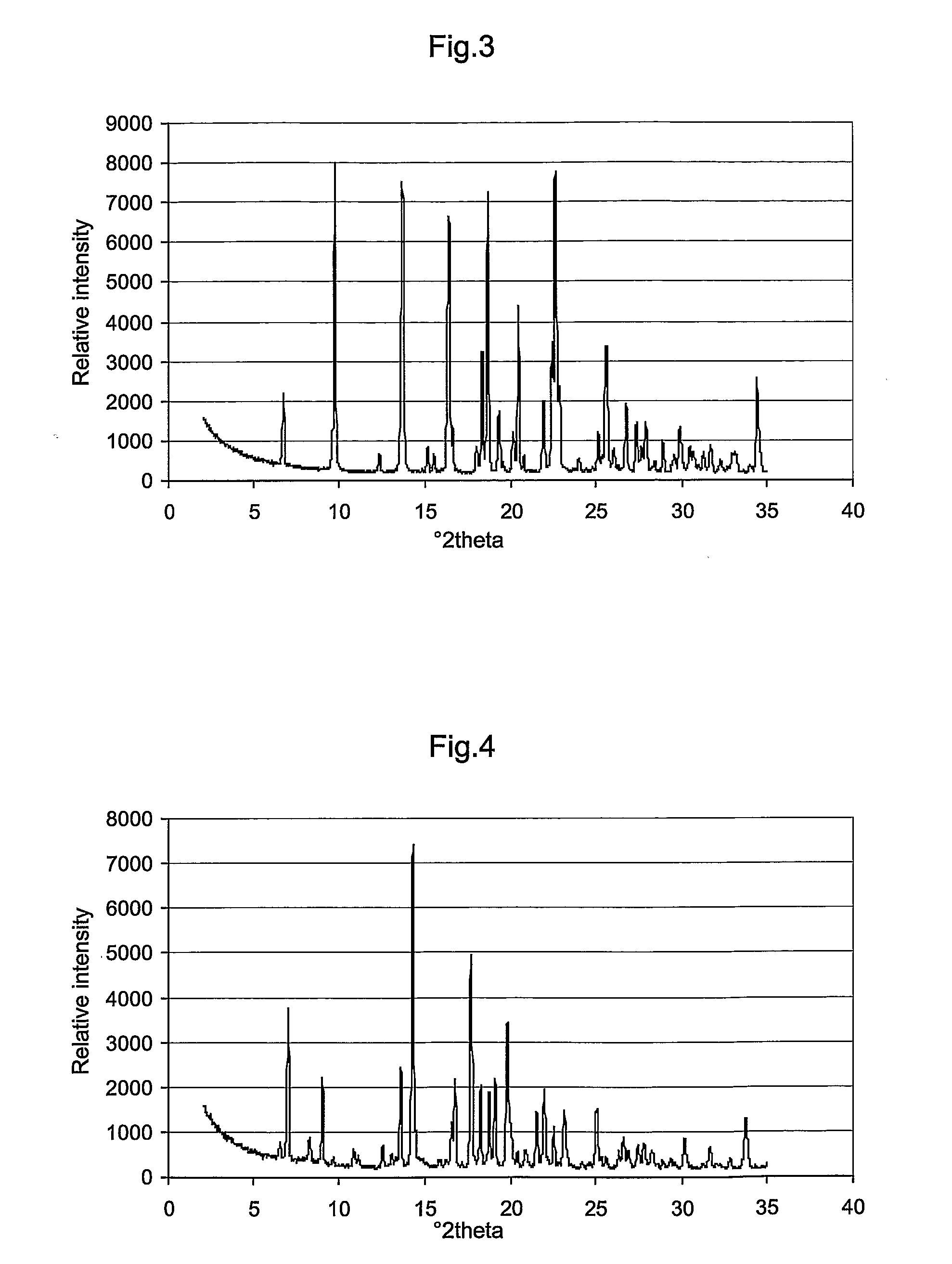Novel Crystal Modifications
a technology of crystal modification and modification, applied in the field of new crystal modification, can solve the problems of compound (i) showing unpredictable solid state properties with respect to thermodynamic stability, and achieve the effect of reducing the amount of ammonium carbona
- Summary
- Abstract
- Description
- Claims
- Application Information
AI Technical Summary
Benefits of technology
Problems solved by technology
Method used
Image
Examples
example 2
(RS)-5-Methyl-5-{[(phenylmethyl)thio]methyl}imidazolidine-2,4-dione
[0214]A suitable sized pressure rated reactor was charged with benzylthioacetone (95% purity) (85.26 g, 450 mmol, 1 mol eq.), water (413 mL) and 2-propanol (146 mL). The mixture was stirred for about 15 minutes to achieve homogeneity. Ammonium carbonate (49.56 g, 509 mmol, 1.13 mol eq.) and potassium cyanide (30.54 g, 460 mmol, 1.02 mol eq.) were then charged. The reaction mixture was warmed to 90° C., which induced a pressure of ca. 2.5 barg. The reaction was cooled and analysed by LC for the disappearance of starting material. After completion of the reaction, the required product was allowed to crystallize. If necessary, crystallization was induced by seeding. After crystallization, water (971.9 mL) and concentrated hydrochloric acid (96.7 g) were charged to the reaction mixture. This caused a pH change from about 11.9 to 7.4. The crystalline mass was filtered off and subsequently washed with isopropyl acetate. Af...
example 3
(S)-5-Methyl-5-{[(phenylmethyl)thio]methyl}imidazolidine-2,4-dione
[0216](RS)-5-Methyl-5-{[(phenylmethyl)thio]methyl}imidazolidine-2,4-dione was separated into the component enantiomers using preparative chiral simulated moving bed chromatography (SMB). The same chiral stationary phase and mobile phase were used as disclosed in WO 02 / 074767 (page 89). The enantiomers were recovered in essentially quantitative yield.
[0217]The resulting (S)-5-benzylsulfanylmethyl-5-methyl-imidazolidine-2,4-dione (5 g) in methanolic solution was reduced in volume (to about 20 mL) under reduced pressure at 35° C. Water (40 mL) was added to the solution dropwise, maintaining the internal temperature at 35° C. After about half of the water had been added, the product started to precipitate. The mixture was allowed to cool slowly to RT and was then cooled in an ice bath to 2° C. The product (4.56 g, 91% of theoretical after SMB separation) was collected by filtration at 2° C. as a white crystalline solid. O...
example 4
((S)-4-Methyl-2,5-dioxo-imidazolidin-4-yl)-methanesulfonyl chloride
[0221]Method 1
[0222](S)-5-Benzylsulfanylmethyl-5-methyl-imidazolidine-2,4-dione (106.9 g, 427.1 mmol, 1.000 mol eq.) was dissolved in a mixture of glacial acetic acid (8 vol eq.) and water (1 vol eq.) and cooled to about 4° C. Chlorine gas (96.9 g, 3.2 mol eq.) was then passed into the well-agitated solution at a steady rate over approx. 1 h such that the reaction mixture temperature was maintained between 12 and 15° C. throughout the majority of the addition (the jacket temperature was kept at 4° C. throughout). After the reaction was complete (the mixture turns a characteristic green colour and the temperature drops sharply), the mixture was sparged with nitrogen and heated to about 30° C. to give a white slurry. The bulk of the solvent was then removed by vacuum distillation. Toluene (534.5 mL) was added and a similar volume of solvent removed by distillation under vacuum. The addition / distillation of toluene was ...
PUM
| Property | Measurement | Unit |
|---|---|---|
| density | aaaaa | aaaaa |
| melting point | aaaaa | aaaaa |
| glass transition temperature | aaaaa | aaaaa |
Abstract
Description
Claims
Application Information
 Login to View More
Login to View More - R&D
- Intellectual Property
- Life Sciences
- Materials
- Tech Scout
- Unparalleled Data Quality
- Higher Quality Content
- 60% Fewer Hallucinations
Browse by: Latest US Patents, China's latest patents, Technical Efficacy Thesaurus, Application Domain, Technology Topic, Popular Technical Reports.
© 2025 PatSnap. All rights reserved.Legal|Privacy policy|Modern Slavery Act Transparency Statement|Sitemap|About US| Contact US: help@patsnap.com



